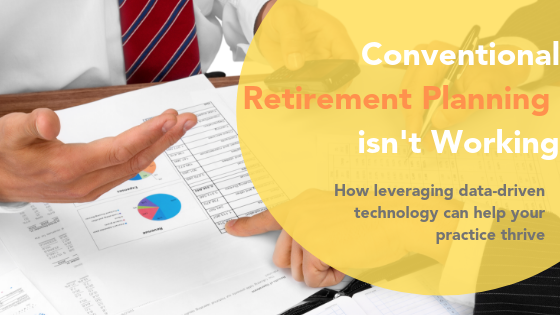Much of the financial world has changed dramatically over the last 30 years. Stocks and bonds, IRA’s and even Social Security are far different today than they used to be. It should come as no surprise, then, that retirement planning needs to change from its traditional methods to strategies more adapted to our modern world.
Pitfalls of traditional planning
The rule of thumb used to be that a withdrawal rate of 4% would suffice retirement needs. Now experts are saying that this might not be enough given various states of healthcare and the U.S. economy.
Conventional financial planning is no longer working, so as a financial advisor you need to be thinking about a Brave New World when it comes to managing your clients’ wealth. Stock buy-backs are at an all-time high, inflation is projected to increase, and as we’ve mentioned before, health-care related costs are surging. Planning with today’s numbers will not suffice for future expenses. Adding extra padding to any and all health-care related planning should be your norm.
We are living longer than ever, but we’re also spending more than ever. These health care costs will impact how far their money goes in their golden years. On the flip side, one of the benefits of modernity is that we can project what kind of health care your clients will need in the future and how much it will cost, a simple hedge against ever increasing expenses.
How to refresh your planning strategies
What should be the strategy moving forward for your clients then? While save often and save early is undoubtedly the most effective and straightforward strategy that you can recommend to your clients, you can also leverage the technological advancements and solutions available to make better projections for how much money your clients truly need to save for retirement.
From portfolio risk analysis tools to our own HALO health and longevity optimizer solution, there are many data-driven solutions available to advisors now that can move the needle for improving your overall client recommendations and relationships.
When it comes to building those relationships, it’s also important to have frank, honest discussions with your clients about how they see their retirement unfolding. The lifestyle they have imagined may not line up with the reality of their financial situation or projected wealth in retirement. Gone are the days of figuring out retirement as it happens, a plan needs to be put in place and adhered to if your clients want retirement to run smoothly.
This new era of financial planning is sure to be challenging, but it’s also an opportunity to give your clients peace of mind and tools to help them make the most out of the final years of their life.

